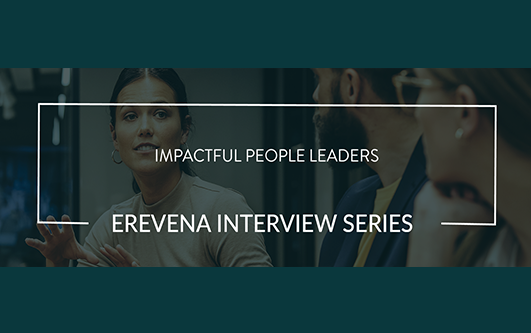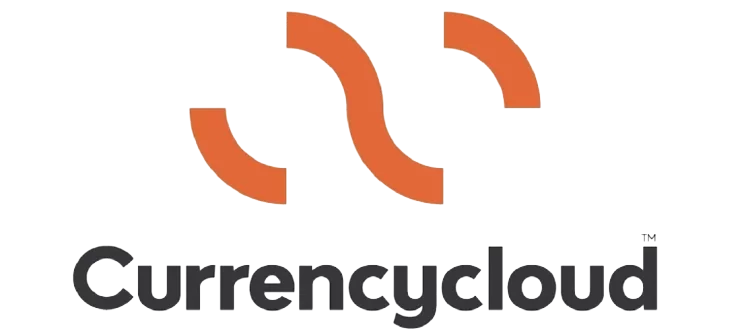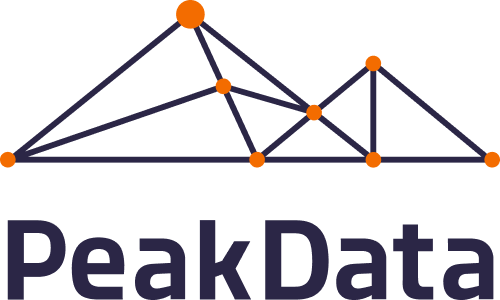Roxana Dobrescu, Chief People Officer (CPO) at Labster, talks to Erevena Partner Dove Dalele about the impact of the shift to remote working and why today’s HR leaders have a social responsibility to develop and nurture talent that can continue to grow beyond a single company’s environs.
What was your career path into HR?
Funnily enough it goes back to my teenage years in Romania when I rescued a book that was about to be burnt by my grandmother to keep us warm. It was a psychology manual (from my oldest cousins) – and it changed my life. It sparked a life-long interest in the power of psychology, which I went on to study at university. I had no career end game in mind but, as part of my degree, I took an HR internship at a well-known Romanian bank. The HR team was fantastic in the way everyone jelled and worked together. I was also pleasantly surprised to discover how influential and anchored in the business the HR leader was. It was truly my HR awakening moment.
How did your early experience in HR shape your understanding of the role?
I was lucky enough to work in diverse areas. I did everything, from talent acquisition, employer branding, and employee communication to organisational design and talent management. So, I developed as an HR generalist before becoming an HR leader. This taught me the ABC of this job and gave me an all-round profile.
It’s also important for where I am today that I had a mentor, someone senior and wiser. He advised me that being a full, holistic HR leader meant going out and understanding what diversity looked like in all its shapes and forms. He advised me to leave my home country and search for new assignments and challenges abroad. This was absolutely crazy at the time as we had two small children. However, I took a leap of faith and it became one of the best career decisions I ever made.
What prompted your move to Labster in 2021?
I wasn’t looking to leave where I was at the time, but a friend from the executive search arena told me about Michael Bodekaer Jensen. They advised he was an absolutely amazing founder who I should meet for a virtual coffee. It was the middle of the pandemic so high ambiguity for everyone. It was maybe not the best timing for making a career move. Yet, very soon, I was blown away by Labster’s purpose of democratising education with access to world-class STEM laboratories and overall science content, no matter where someone is studying from. Add to this Michael’s highly inspirational persona and the promise of amazing autonomy allowing me to bring in innovation and build new practices and programs, which is the dream of every HR leader.
What’s the most exciting part of your day-to-day work?
It is different depending on the key projects I am working on. Now, for example, I’m excited by the creativity I’m afforded as we build a new talent management process and I’m able to create new content. One or two quarters ago, I’d have said it was when we brought in excellent talent on board, having an impeccable partnership with our hiring managers. That gave me great satisfaction. If you ask me the same question in a few weeks’ time, it will probably be about the executive offsite I’m preparing for, with some really cool workshops and debates.
As a leader, I am most jazzed when I can significantly contribute to someone’s development or career acceleration. When the people I work with or whom I mentor are having “aha” moments, when they look back and recognise the great progress they’ve made; and especially when they look forward and they get excited about how many new milestones they are ready to achieve.
What advice would you give a specialist HR practitioner moving to a generalist role?
From being in a niche function, such as talent acquisition & management, diversity & inclusion, learning & development, or total rewards, moving to a generalist role demands stamina. You suddenly have a tonne of new stakeholders, all with different requirements – and very few coming with a ‘thank you’ card. You need a lot of intrinsic motivation and resilience to be a powerhouse for the business. You also need curiosity. Constantly understanding and enriching your business acumen, staying up to date with the latest trends, and looking at your data to take smart and informed decisions together with your stakeholders.
Obviously doubling down on your technical expertise and know-how in order to build trust with your internal clients. This means everything in HR, from employer branding and internal comms to compensation philosophy, organisational design, development, or talent management.
What should a people leader be to the founder/CEO?
The founder’s den can be a lonely place, even with a great executive team supporting you constantly. When the company is growing, it’s amazing but when the company is going through hard times, there’s a huge level of pressure and anxiety that cannot ever be underestimated.
I see the people leader’s role from an enabler’s perspective. This translates first into supporting the CEO with high emotional intelligence. Having an eye for bringing out the best in people will be key to achieving operational excellence and building a high performance culture.
CEOs bear much of the responsibility for the success of the company. It’s a lot to manage, and often, the challenges and demands of running the entire organisation can lead to a disconnect with its employees. This is where the people leader plays a critical role, helping the CEO to strategically stay connected with the heartbeat of the organisation.
Advisor, coach, devil’s advocate, supporter, a people leader has so many hats and opportunities to enable the CEO in a great partnership.
How have things changed in HR over the past decade?
The HR role has dramatically evolved. Twenty years ago, it was heavy on the administrative side, involving hiring and firing as the main key responsibilities and outcomes.
Meanwhile, we started owning our seat at the table and bringing value as a full business partner. Understanding the business model inside out, leading with the commercial perspective, supporting and further building data to enable sharper decisions.
Nowadays, we have an active role as organisational architects, bringing in the capability to work at and across the organisational, conceptual and cultural boundaries in a systemic way. Inviting, leading and implementing change that will drive our business strategy and answer to our customers’ needs.
Our role highly accelerated during the pandemic when employees’ mental and physical health came to the fore. And it continued as we entered the hybrid at-home/in-office work model and faced the ‘great resignation,’ followed by inflation and layoffs. What’s coming next? We will see. We now have the change agility to leverage change as our competitive advantage in further building a healthy and distinctive ecosystem.
How has the rationale of the HR team evolved?
This is another fascinating nuance to zoom into. A decade ago, it was all about super healthy turnover levels that we tried to maintain as low as possible. This is no longer the case. We’ve shifted our focus from attrition as being the symbol of the overall organisational healthiness to employee engagement and experience.
We recognise that in the new era we live in people are embracing boundaryless careers, whereby they’re not staying with the same company for life but want to grow, learn as much as possible and then move on. As leaders we have this graceful responsibility to support and nurture the people we work with and to enable them to be their best professional version. So, when they are ready to move on they will continue to greatly contribute to our bigger community.
This change reflects a move from loyalty (keeping people on board for as long as possible) to impact (helping them have a bigger footprint on the business ‘while they are here’). It’s a healthy new perspective and I look on it as a social responsibility that we all bear as organisations to develop and nurture the talent that can then go out into the wider workforce. And continue to inspire and to have a sustainable impact.
What do you look for in a founder when considering joining the company?
Chemistry. The first key ingredient. You will be working hand-in-hand with the founder, supporting, laughing, challenging, debating. So, the right chemistry between you is essential. It’s a joy to work with founders who are extremely passionate about their company and, to be honest, I have never met a founder who wasn’t!
I also look for a match in our personal values, such as integrity, which is something I won’t compromise on. Yes, I am a passionate and hungry professional, quite captivated when it comes to achieving results, yet there is a limit when it comes to what integrity means to me and I will always put this on the table when talking to a founder. It’s fundamental to probe and ask questions that give you insight into their personal values.
How a founder stays relevant is also important. They are usually very much into the business model, working with the board and advisors, making sure that the growth is sustainable. Nevertheless, beyond that there is an entire organisation depending on them and I’m keen to find out how much they are willing to invest emotionally, to coach, to constantly build a valuable network, to embrace the new and cultivate a future mindset.
What do you look for when hiring leaders/executives in your team?
We have fundamentally changed our exec team at Labster over the last two years, so this topic is highly relevant to me. I see it like a puzzle or Lego blocks where we’re piecing together the right team. Beyond the experience and the skillset, I look for someone with culture-add. Labster is innovating and disrupting the largely conservative education sector with its democratising mission. For this to happen, we must build a diverse team, which is something I look at especially when building the executive line-up. We also need people with grit as the start-up world isn’t always rosy. Any new executive must have the stamina to spread energy and inspiration as an ambassador both internally and externally.
They should also be open to change for so many reasons. I have worked with executives who were resistant to change and lacked ‘change agility’ but that’s not what a start-up needs. We want executives with the right mindset who welcome change and ambiguity and who understand how to properly implement and lead change in the organisation.
How do you test for these attributes?
We ask lots of situational and specific questions. For example, if we want to probe the talent development piece, we’ll ask if they’re building a successor right now in their current job. Are they working on succession planning? What is a successor for them? Can they give me an example of the person they’re developing? How have they built the development plan exactly?
After the ‘growth at all cost’ market, how do you cope with the new talent market dynamics?
Most start-ups have been on a roller coaster journey. After the honeymoon of hypergrowth, there was dialling down, growing up again and then going back. You need to find your own tempo and keep agile so that you can react to what’s happening and what’s coming your way. Always think and plan in scenarios.
Two years ago when I joined Labster, building the talent acquisition machine was the number one priority, but this is no longer the case. We decided to become a remote-first company, which plays to our strength in terms of working on four different continents and in around 30 countries, with six offices.
We are navigating how to keep our global talent pool flexible, while nurturing our sense of belonging. From a talent acquisition perspective, we’re really trying to support our candidates, for example helping them with digital visas and sponsoring visa relocations. It also helps that we work in pretty cool locations, like Valencia, Boston or Bali. And we’re not rushing – rather, we’re hiring at the right pace. This means not making any sort of compromise when it comes to quality just because we need to fill seats fast. So, our approach to the new market dynamics features a global footprint, a remote first model and a lot of focus on quality and culture.
What’s the best advice you’ve been given?
I’ve received many golden nuggets of advice but one of the best was to pick my battles. As a young, hungry leader, you want to do it all. You want to change people’s minds if they don’t agree with you. And on many occasions, this is just a waste of energy.
People leaders and people teams often forget that our business leaders and our internal clients can only take so much. We can build amazing playbooks, amazing tools and programs for them, but this can be overwhelming. The result? Organisational fatigue. They can’t absorb it all while also doing their own jobs – it’s too much. So, even though we might have some cool products to fix this and fix that, we should remember that not everything needs fixing at the same time. This comes back to picking my battles in terms of priorities and what’s going to make the maximum impact with the minimum effort to support the company. It was a piece of advice as relevant 20 years ago when I received it as it is today.
Share this article:











